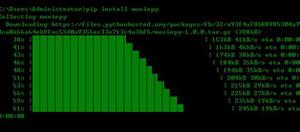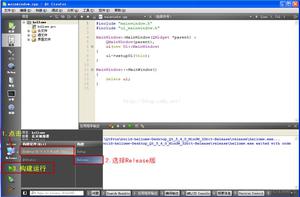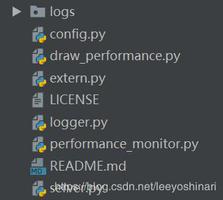Python实现快速多线程ping的方法
本文实例讲述了Python实现快速多线程ping的方法。分享给大家供大家参考。具体如下:
#!/usr/bin/python
#_*_coding:utf-8_*_
#
'''
名称:快速多线程ping程序
开发:gyhong gyh9711
日期:20:51 2011-04-25
'''
import pexpect
import datetime
from threading import Thread
host=["192.168.1.1","192.168.1.123","192.168.2.1",
"192.168.1.1","192.168.1.123","192.168.2.1",
"192.168.1.1","192.168.1.123","192.168.2.1",
"192.168.1.1","192.168.1.123","192.168.2.1",
"192.168.1.1"]
report_ok=[]
report_error=[]
class PING(Thread):
def __init__(self,ip):
Thread.__init__(self)
self.ip=ip
def run(self):
Curtime = datetime.datetime.now()
#Scrtime = Curtime + datetime.timedelta(0,minute,0)
#print("[%s]主机[%s]" % (Curtime,self.ip))
ping=pexpect.spawn("ping -c1 %s" % (self.ip))
check=ping.expect([pexpect.TIMEOUT,"1 packets transmitted, 1 received, 0% packet loss"],2)
if check == 0:
print("[%s] 超时 %s" % (Curtime,self.ip))
elif check == 1:
print ("[%s] %s 可达" % (Curtime,self.ip))
else:
print("[%s] 主机%s 不可达" % (Curtime,self.ip))
#多线程同时执行
T_thread=[]
for i in host:
t=PING(i)
T_thread.append(t)
for i in range(len(T_thread)):
T_thread[i].start()
#
#print ("\n=========问题主机情况如下==========\n")
#output(report_error)
#print ("\n=========正常主机情况如下==========\n")
#output(report_ok)
执行结果:
administrator@nagios:/win/pexpect$ ./ping.py
[2011-04-25 21:30:22.126981] 192.168.1.1 可达
[2011-04-25 21:30:22.148376] 192.168.1.1 可达
[2011-04-25 21:30:22.179846] 192.168.1.1 可达
[2011-04-25 21:30:22.203691] 192.168.1.1 可达
[2011-04-25 21:30:22.227696] 192.168.2.1 可达
[2011-04-25 21:30:22.134049] 超时 192.168.1.123
[2011-04-25 21:30:22.145610] 超时 192.168.2.1
[2011-04-25 21:30:22.157558] 超时 192.168.1.123
[2011-04-25 21:30:22.167898] 超时 192.168.2.1
[2011-04-25 21:30:22.197572] 超时 192.168.1.123
[2011-04-25 21:30:22.202430] 超时 192.168.2.1
[2011-04-25 21:30:22.215561] 超时 192.168.1.123
[2011-04-25 21:30:22.229952] 超时 192.168.1.1
希望本文所述对大家的Python程序设计有所帮助。
以上是 Python实现快速多线程ping的方法 的全部内容, 来源链接: utcz.com/z/325789.html






